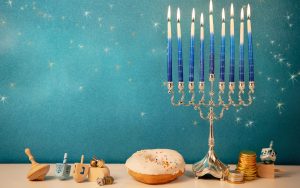 The Passover Seder plate (ke’ara) is a special plate containing six symbolic foods used during the Passover Seder. Each of the six items arranged on the plate posses a special significance which teach us timeless lessons of the Jewish people’s physical and spiritual Exodus from Egypt. Many decorative and artistic Seder Plates sold in Judaica stores have containers intended for the various symbolic foods. Let’s understand what they really mean:
The Passover Seder plate (ke’ara) is a special plate containing six symbolic foods used during the Passover Seder. Each of the six items arranged on the plate posses a special significance which teach us timeless lessons of the Jewish people’s physical and spiritual Exodus from Egypt. Many decorative and artistic Seder Plates sold in Judaica stores have containers intended for the various symbolic foods. Let’s understand what they really mean:
The Symbols of the Seder Plate
Vegetable (Karpas) – At the beginning of the Seder, following the recital of Kiddush, a vegetable, usually parsley, celery or boiled potato is dipped into salt water. It is said that the dipping of a simple vegetable into salt water represents the tears our ancestors shed during their years of enslavement. At the same time, until the Jews crossed the Red Sea, there still remained the possibility of the Egyptians chasing after them and returning them to slavery, which is exactly what they attempted to do. Only after the splitting of the sea, when the Egyptian army was drowned, were they entirely free. It was, therefore, the sea, symbolized by the salt-water, which was instrumental in finally freeing the Jews from Egyptian slavery.
Shank bone (Zeroa) –A roasted lamb or goat shank bone, it is the only piece of meat on the Seder Plate, which symbolizes the Korban Pesach (Passover offering), a male lamb or kid that was sacrificed on the night before Passover in the Temple in Jerusalem, then roasted and eaten as part of the meal on Seder night. Since the destruction of the Temple, the zeroa serves as a reminder of this important ritual ; it is not eaten or handled during the Seder.
Hard Boiled Egg (Baytzah) –A roasted hard-boiled egg symbolizes the Korban Chagigah (festival sacrifice) that was offered in the Temple in Jerusalem on the three pilgrim festivals, Passover, Shavuot and Succoth. On Passover it was roasted and eaten as part of the meal on Seder night. Although, like the Pesach sacrifice, the chagigah was a meat offering, today the chagigah is commemorated by an egg, a symbol of mourning over the destruction of the Temple and thus the inability to offer the sacrifices related to the Passover holiday.
Charoset –A recipe usually made from chopped nuts, apples, cinnamon, and sweet red wine. It represents the mortar the Israelites were forced to use while they built structures for their Egyptian taskmasters. However now, when we put taste charoset, its a sweetness that is associated with freedom, not slavery. This is a duality which manifests at various points along the Seder plate, that only through the experience of slavery can true freedom be known.
Bitter Herbs (Maror) – The mitzvah of eating bitter herbs during the Seder also symbolizes the bitterness and harshness of the slavery the Hebrews endured in Egypt. While maror seems like a sad note on this night of joy, in reality even the maror is an acknowledgement that the bitterness and suffering of the Egyptian exile is what fueled Israel’s process of spiritual development and ultimate redemption.
Bitter Vegetable (Hazeret) – This piece of the Seder plate also expresses a very important relationship between freedom and slavery. The leaves of romaine lettuce are lush and sweet, a sign of a healthy vitality and growth. At the same time, the lettuce grows from a green-white stalk which turns hard and bitter. Once again, true freedom and redemption can only really be appreciated when it is rooted in its lack, a state of slavery and exile.












